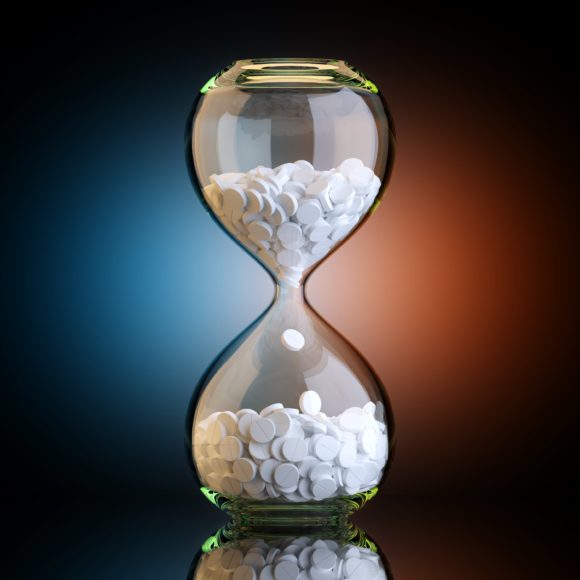Q: I always take Tylenol® for fever or headaches because it doesn’t seem to upset my stomach like ibuprofen does. I’ve always thought that Tylenol® was safe because my doctor always recommended it for my children, but my sister-in-law insists that Tylenol® is dangerous. Who’s right, my doctor or my sister-in-law?
You are both right. Tylenol® is quite safe to take as long as you pay close attention to HOW MUCH you are taking and are careful to avoid taking too much of it.
Tylenol® was first used as a pain reliever in 1893 but due to concerns about its ability to cause liver damage it was only cautiously used until 1949, when it became a widely accepted alternative to aspirin. Today, acetaminophen is the most popular non-prescription painkiller sold in the United States and is even considered safer than ibuprofen or naproxen as long as you don’t take too much.
The best way to take Tylenol® or acetaminophen safely is to watch the TOTAL amount you take over the day and always stay below the maximum recommended dose. For healthy adults, the Food and Drug Administration (FDA) recommends no more than 4000mg per day of acetaminophen. That’s equivalent to twelve regular strength acetaminophen pills at 325mg each, eight extra-strength pills at 500mg each, or six extended–release tablets at 650mg each.
If you are over 60 years old, the FDA recommends a lower daily limit: 3100mg, or 3.1 grams daily. You should also take no more than 3100mg per day if you have liver problems or drink more than 2 ounces of alcohol on a regular basis. 2 ounces of alcohol is equivalent to one 12-ounce beer, one glass of wine, or one shot glass of distilled spirits. This lower daily limit of acetaminophen is equal to nine regular strength 325mg tablets, six extra-strength 500mg pills, or four extended-release 650mg pills.
Most people who develop liver failure from taking too much acetaminophen never realize they are in danger until it is too late and the damage is done. A big part of the problem is the popularity of acetaminophen with drug makers. Acetaminophen is an active ingredient found in over 200 over-the counter products as well as popular prescription narcotic analgesics like Vicodin® and Norco®.
Acetaminophen lurks in non-prescription remedies for allergy, sinus problems, cough, cold and flu symptoms, even sleep remedies. In 2005 alone, consumers in the United States purchased more than 17 billion doses of non-prescription products containing acetaminophen.
Unfortunately, over-the-counter remedies are not the only places in your medicine cabinet you can find acetaminophen. Common prescription pain medicines like Vicodin® or Percocet® contain both a strong narcotic pain reliever plus acetaminophen. The combination of hydrocodone and acetaminophen called Vicodin® has been one of the most frequently dispensed prescription medicines in the United States since 1997, accounting for 11 billion doses filled by pharmacies in 2005. Unfortunately, acetaminophen in your prescription bottle is easy to overlook because without the room to squeeze the word acetaminophen onto the prescription label, the abbreviations APAP or ACET are used instead.
Here are 4 ways to keep yourself safe when taking Tylenol® or acetaminophen:
- Know the maximum daily amount of acetaminophen or Tylenol® that’s safe for you.
For healthy adults this is 4000mg over 24 hours; for others it is even lower. Ask your doctor or pharmacist if you aren’t sure.
- Keep track of how much acetaminophen you are taking.
Acetaminophen is called paracetamol in Europe and some other countries. Check the list of active ingredients of all non-prescription products, food supplements and herbal remedies for the names acetaminophen or paracetamol. If you take prescription pain medicine, watch for the abbreviation APAP or ACET, and ask your pharmacist how much acetaminophen is in each pill.
- Don’t take more than one medicine containing acetaminophen at a time.
Taking both a non-prescription and prescription product containing acetaminophen increases your risk of getting too much. If you have pain medicine prescriptions from more than one medical provider such as a dentist, surgeon, ER doctor or urgent care center, you’re also in danger of getting too much acetaminophen. Look for the abbreviation APAP or ACET on the label of your prescription bottle or ask your pharmacist if any of your prescriptions contain acetaminophen.
- Keep your liver healthy.
If you drink alcohol, do it in moderation. If you have liver disease, you should avoid drinking when taking Tylenol® or take a completely different painkiller. Ask your doctor how much acetaminophen per day is safe for you to take for fever, aches or other types of pain.


